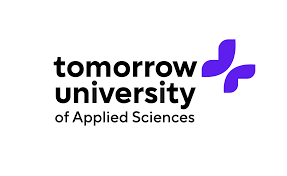Usuarios del Club TRPlane
A través de los años, he visto muchas presentaciones de startups que cubren todo tipo de industrias, verticales y etapas. Y admito que las plataformas para nuevas empresas basadas en la educación son bastante raras, y un equipo de personas que intentan establecer una universidad completamente nueva y solo remota es aún más raro. Tomorrow University recaudó alrededor de 10 millones de dólares en su serie A. Escribe sobre la recaudación de fondos en su blog.
Diapositivas en esta plataforma
Las presentaciones de 30 diapositivas son cosa del pasado. Tomorrow University quizás haya compensado un poco en exceso en la otra dirección, con una presentación muy concisa de 10 diapositivas. Es posible para contar tu historia en unas pocas diapositivas. Guy Kawasaki, por ejemplo, aboga por una plataforma de 10 diapositivas, pero la gran mayoría de los fundadores no tienen un control lo suficientemente firme de su historia como para lograrlo.
Según la presentación, la universidad planea ofrecer un programa de MBA, por lo que esperaría que el documento de presentación sea realmente de primera clase, con planes y finanzas muy completos. En lenguaje de las universidades: “Esta documento no cumple con las expectativas mínimas”. Llegaremos a ese punto. Por ahora, aquí están las diapositivas que Tomorrow University eligió incluir:
- Diapositiva de portada
- Diapositiva de contexto histórico
- Diapositiva de objetivos
- Diapositiva de misión
- Diapositiva de solución
- Diapositiva del producto
- Deslizamiento de tracción
- Deslizamiento del mercado
- diapositiva del equipo
- Diapositiva de cierre
Tres puntos a los que prestar atención
La experiencia universitaria puede ser bastante decepcionante, por lo que estoy de acuerdo con la idea de que la experiencia universitaria en general podría necesitar una revisión. Este documento habla el idioma común de muchas maneras.
Llevar algo de “vida real” a la educación
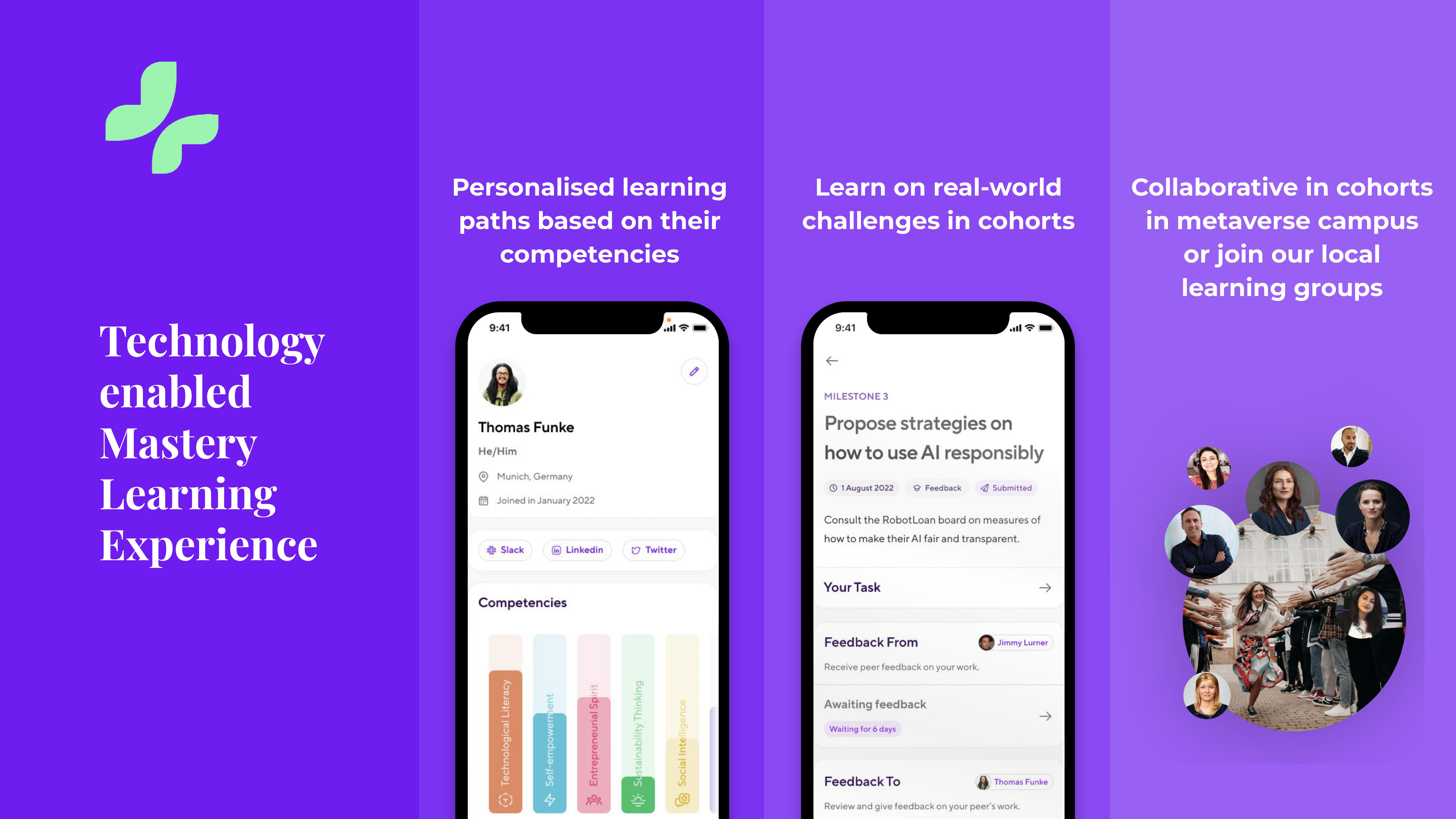
Así es como Tomorrow University imagina las universidades del futuro
Los seres humanos son criaturas infinitamente complejas y llenas de matices, por lo que tiene sentido adaptar los programas educativos a los deseos y necesidades individuales. Un “campus metaverso” suena bastante vergonzoso (y en ninguna parte de la plataforma la universidad explica lo que eso significa específicamente), pero en general, creo que esta diapositiva abre la puerta para que los inversores sueñen un poco sobre lo que será la próxima generación. cómo podría ser la experiencia universitaria. Los desafíos de la vida real, el aprendizaje personalizado y los grupos de aprendizaje locales se parecen mucho más al mundo remoto que vivimos hoy que a lo que encontraríamos en la experiencia universitaria actual.
Tracción interesante
Mis dos preguntas más importantes antes de leer la presentación: ¿Está acreditado y cómo mide el éxito? Resulta que ambas preguntas fueron respondidas en la misma diapositiva. ¡Bien hecho!
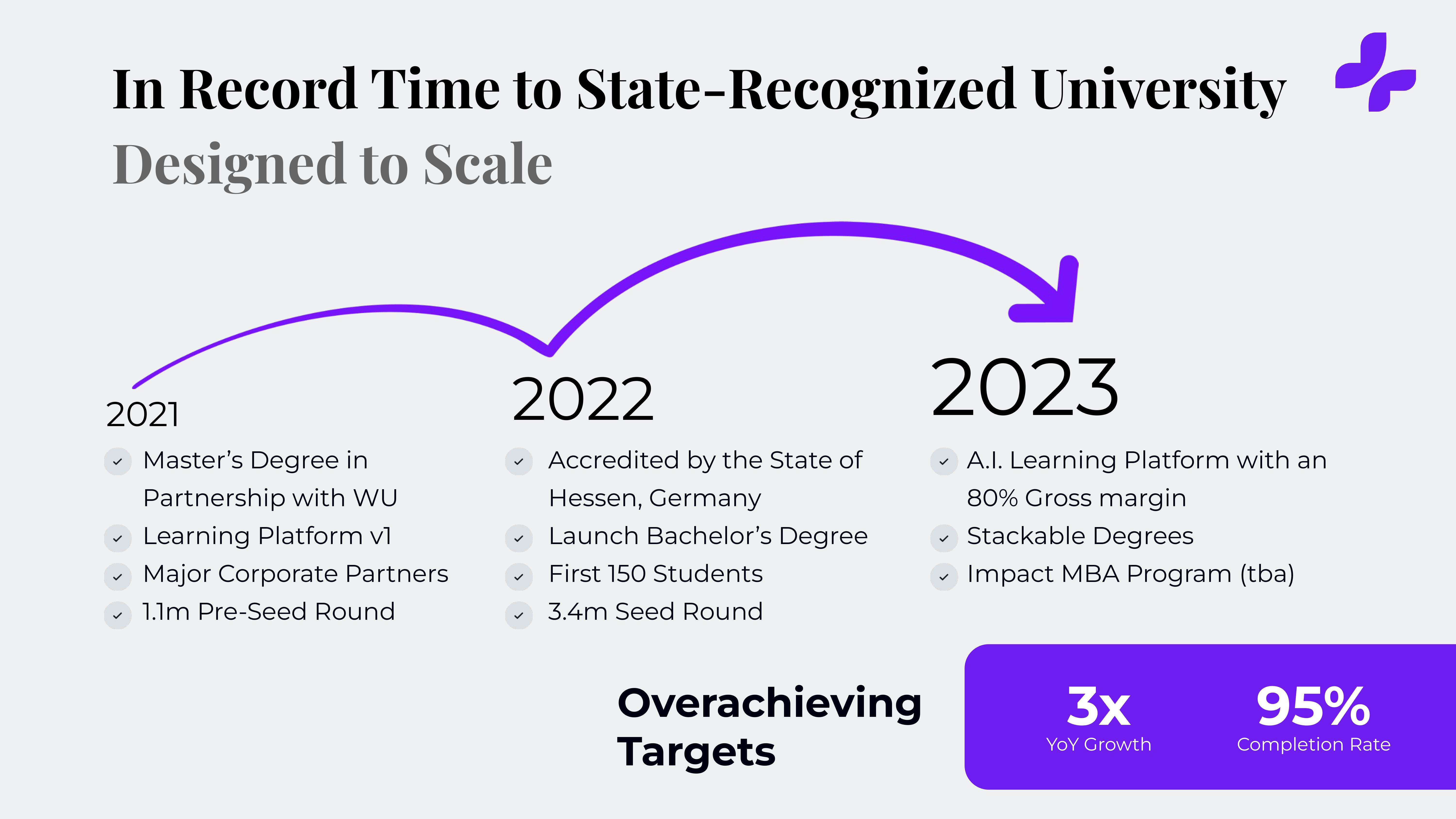
Este tobogán de tracción hace mucho trabajo pesado en la plataforma de Tomorrow University
Me gusta esta diapositiva y responde algunas preguntas interesantes, como cuándo se fundó, cuándo empezó a ofrecer títulos y cuánto dinero ha recaudado hasta la fecha. Pero también planteó algunas preguntas.
Por un lado, tener una tracción deslizante tan delgada en números es un poco sospechoso. Dice que tiene un crecimiento 3 veces mayor, pero no incluye cuál es ese crecimiento. Como eso no está especificado en la diapositiva, la mente está invitada a adivinar. ¿Son los ingresos? ¿Es el número de estudiantes? Si es esto último, significa que pasó de 50 estudiantes en 2021, a 150 estudiantes en 2022, a 450 estudiantes este año. También ha recaudado alrededor de 30.000 dólares por estudiante en el programa hasta ahora, lo que parece un poco extraño.
¿Qué significa “en asociación con WU”? Supongo que se trata de la Universidad de Viena, pero eso no se aclara en ninguna parte. Además, ¿cómo funciona la acreditación en Alemania y en Europa en general? La diapositiva sugiere que Tomorrow University está acreditada en Hessen, que es un estado de Alemania que incorpora las ciudades de Wiesbaden y Frankfurt. ¿Pero es eso suficiente para construir una reputación como universidad? El principal organismo de acreditación para la educación superior en Alemania es el Consejo Alemán de Acreditación, entonces, ¿por qué no fue él quien otorgó la acreditación a Tomorrow University? ¿Debería haberlo hecho? ¿Existe un plan para hacerlo?
Basta decir que carezco del conocimiento cultural o local para juzgar realmente esta diapositiva, pero sé que si esto llegara a mi escritorio como inversionista, tendría un conjunto amplio de preguntas para los fundadores. Estas son preguntas que, francamente, serían bastante predecibles y podrían haber justificado una diapositiva o en el apéndice titulado “Hoja de ruta para la acreditación” o similar.
Como startup, lo que puedes aprender de esta diapositiva es no dar por sentado que tus inversores tienen todas las piezas del rompecabezas. Si opera en un espacio regulado (como atención médica, educación o finanzas), hay que asegurar de tener algunas diapositivas de reserva para explicar el panorama regulatorio y dónde se encuentra la startup en el proceso.
Tamaño del mercado
El tamaño de este mercado es tan grande que merece un detalle adicional.
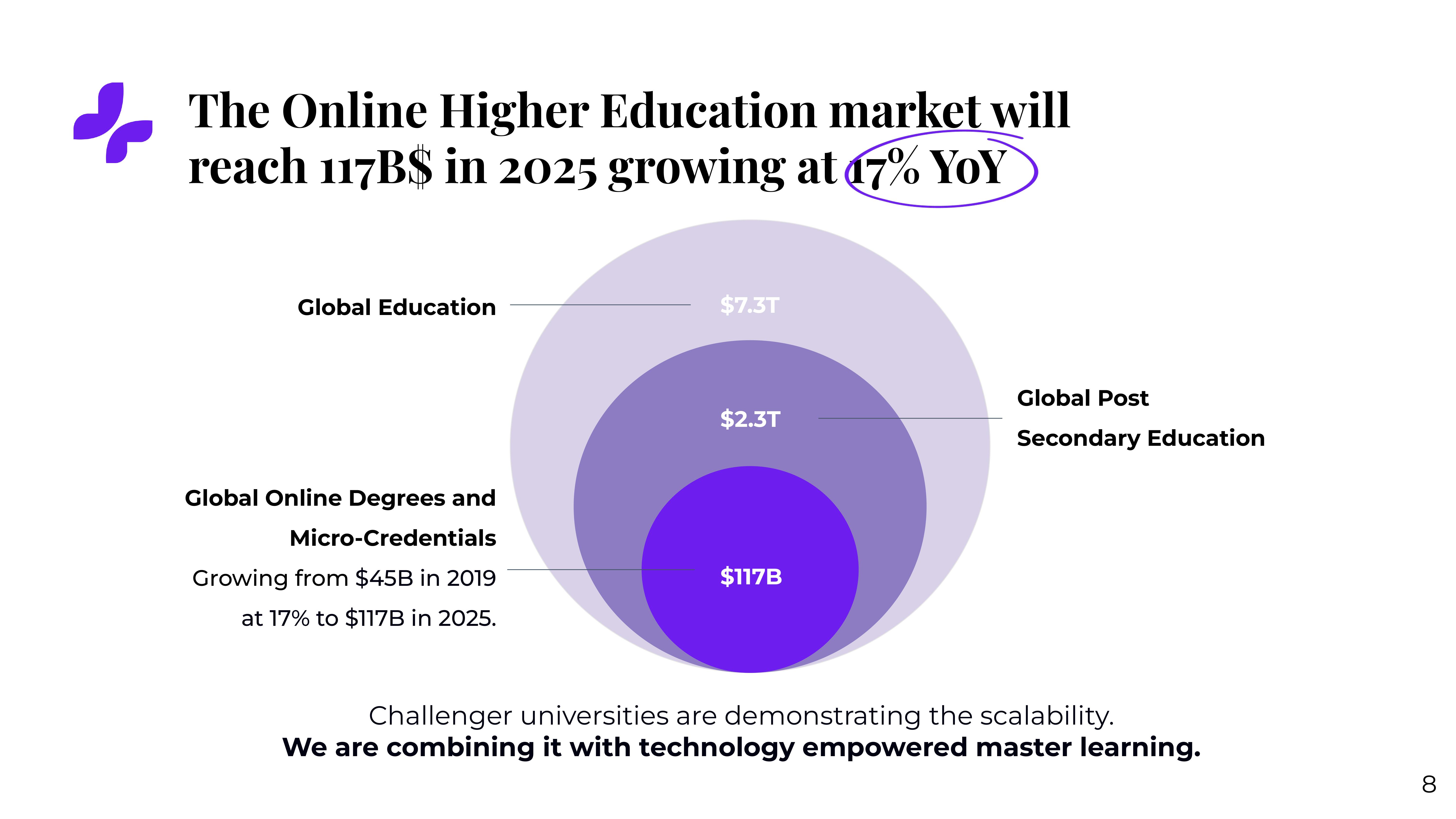
Si Tomorrow University sugiere que va tras todo el mercado educativo global, probablemente lo cuestionaría en ese sentido; por ejemplo, es posible que la plataforma de autoservicio no funcione para todas las personas en el mundo. Quizás la educación postsecundaria sea el verdadero TAM de la empresa, pero aun así, no voy a discutir aquí: hay pocas dudas de que el mercado de la educación es gigantesco y hay una enorme oportunidad para soluciones tecnológicas avanzadas en este espacio.
Hay mucho valor en perseguir mercados enormes, bien establecidos y listos para la disrupción, especialmente si se tiene un buen plan de comercialización. La mejor manera de hacerlo es mostrando el tamaño del mercado y luego explicando cómo se dividirá la porción del pastel a la que la startup se dirige.
Como se puede deducir, fue un poco difícil encontrar partes de esto que realmente llamen la atención gustaran y que a Tomorrow University le fueran bien para su argumento. Dicho esto, también ha otros tres puntos que Tomorrow University podría haber mejorado o hecho de manera diferente.
Tres puntos de mejora
La idea en general es buena. Y sería una opción muy atractiva frente al modelo universitario tradicional.
El principal problema: no parece seguro que Tomorrow University conozca quién es su público objetivo.
¿Qué vas a hacer?
Si se está recaudando 10 millones de dólares, al menos debe existir una idea vaga de lo que se va a hacer con el dinero. Para la mayoría de los fundadores, eso es lo más importante: un saco lleno de billetes es lo que impulsa su organización en la dirección correcta. Pero en estas 10 diapositivas, en ninguna parte dice qué planea hacer con el dinero.
De hecho, la mayor parte del documentto se parece más a un manifiesto que a una recaudación de fondos. No hay que malinterpretar, son fantásticos los buenos manifiestos, pero normalmente no son muy útiles cuando se trata de recaudar fondos. Atendiendo las diapositivas 1, 2, 3, 4 y 10 (presentación completa al final de este artículo). Cada una habla del futuro de la educación en su conjunto, sin muchos detalles. “La universidad de próxima generación para aquellos que cambian el mundo” suena fantástico, pero cada fundador del mundo debería poder proponer un “qué” y un “por qué” buenos y específicos. Es el “cómo, quién y cuándo” lo que hace que la gente quiera invertir, y Tomorrow University no logra explicar los tres.
No hay finanzas, ni proyecciones, ni plan operativo. La plataforma no dice a cuántos estudiantes quiere dirigirse Tomorrow University, cuántos cursos ofrecerá, cómo atraerá a los estudiantes y cuánto les cobrará. Lo más importante es que falta información sobre cómo Tomorrow University gastará los 10 millones de dólares.
Es sorprendente de que esta empresa haya logrado recaudar dinero y sospecho que falta una gran cantidad de datos adicionales en este documento. Esto esta bien; Puede utilizar paneles y hojas de cálculo como parte de su proceso de presentación. Sin embargo, un consejo profesional: es clave colocar una captura de pantalla de los datos en la plataforma con un enlace a los datos en archivo adjunto. Eso facilita el envío a inversores; puede explicarles los números en detalle como parte del proceso de recaudación de fondos.
El equipo
La diapositiva del equipo es la diapositiva más importante. Hay que responder algunas preguntas: ¿Quiénes son estos fundadores? ¿Cuáles son sus roles en la empresa? ¿Por qué estos fundadores son las mejores personas por las que apostar para construir esta empresa?
La diapositiva del equipo de Tomorrow University no responde ninguna de estas preguntas:
 Vaya, esto no dice nada.
Vaya, esto no dice nada.
Esta diapositiva no incluye títulos de trabajo, por lo que en realidad no sé quiénes son cada una de estas personas. ¿Son profesores de la universidad? ¿Asesores? ¿Cofundadores? Sus perfiles de LinkedIn figuran como “CEO y cofundador”, lo que plantea aún más preguntas. ¿Las universidades tienen directores ejecutivos? En mi experiencia, a menudo se les llama cancilleres, presidentes, directores, rectores, guardianes o decanos. Eso no quiere decir que no se pueda innovar en los títulos de los puestos, pero descubrir cómo encajan estos dos caballeros en la estructura de liderazgo (y por qué tienen el mismo título pero presumiblemente diferentes responsabilidades) sería una prioridad para en el proceso de toma de decisiones de inversión.
Ninguna de las experiencias de Christian Rebernik descata el mensaje: “Sí, este tipo puede construir una universidad digital”. Sin embargo, sus felicitaciones son por una cosa: destaca que toda su experiencia es con productos en espacios regulados, dentro de los cuales se incluye la educación.
El linkedIn de Thomas Funke cuenta la historia de cómo fue conferencista y líder intelectual en emprendimiento durante la mayor parte de su carrera. ¿Por qué eso no se refleja en esta diapositiva? E incluso entonces, ¿cómo se traduce ser conferenciante y asesor digital en ser un buen director ejecutivo para esta organización?
Intente hacer este experimento mental: si pudiera escribir una descripción del fundador perfecto para esta startup, ¿cuál sería? Una combinación de estos dos fundadores, tal vez con cierta experiencia en liderazgo senior en una institución de educación superior, sería una coincidencia bastante cercana a esa descripción. La plataforma está haciendo que los inversores trabajen demasiado para descubrir por qué este es un gran equipo fundador.
Explicar el porqué
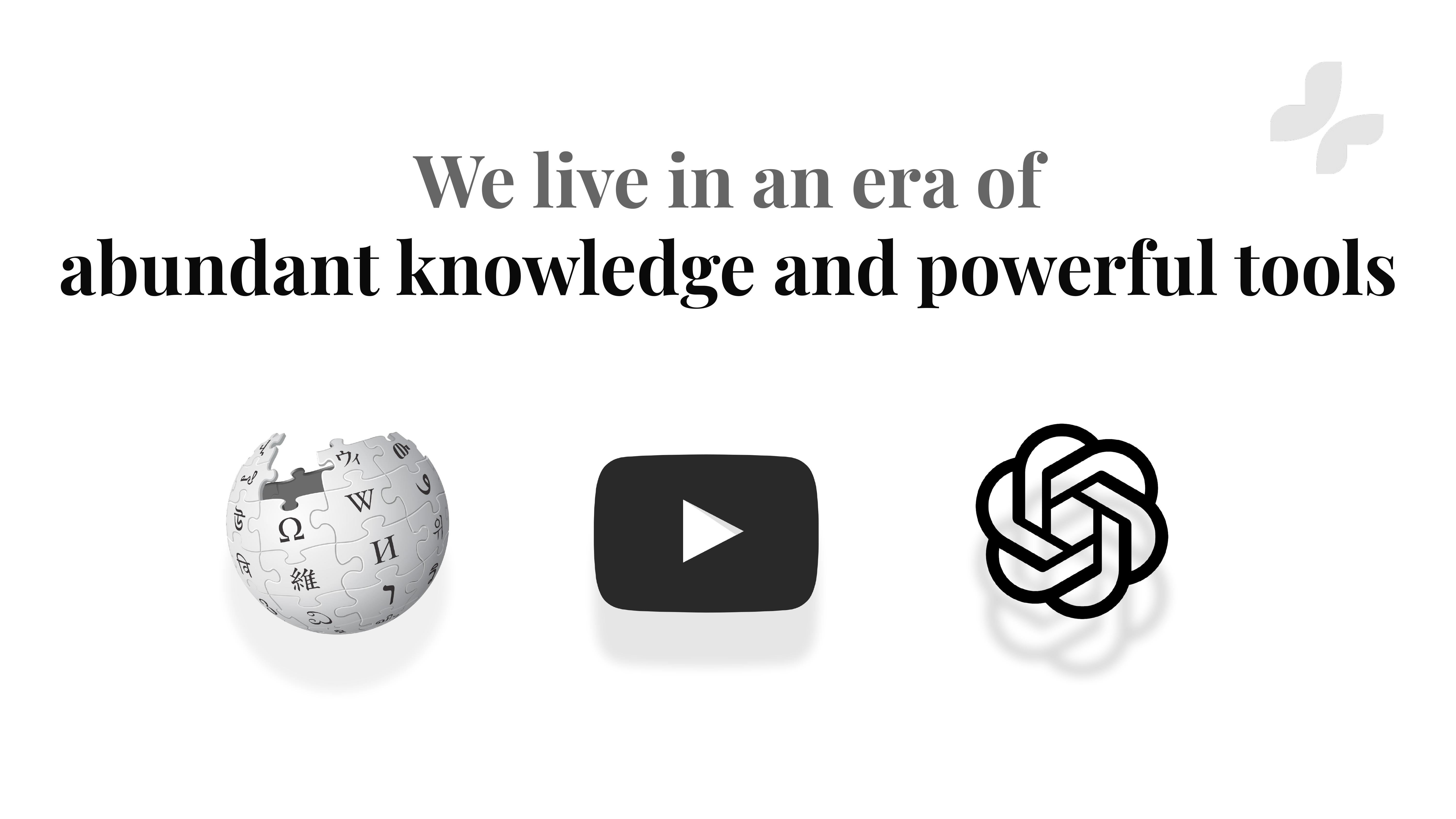
Claro. Pero ¿por qué utilizamos una diapositiva para decir esto? ¿Cómo se conecta esto con la narrativa de la recaudación de fondos?
A lo largo de la presentación, Tomorrow University hace declaraciones de verdad objetiva, sin explicar por qué estas cosas son ciertas. En esta diapositiva, la empresa prepara el escenario con: «Vivimos en una era de abundante conocimiento y herramientas poderosas». Lo cual, por supuesto, es cierto. Pero también es una perogrullada: no está claro por qué es importante compartir esa afirmación entre las diapositivas 1 y 3. En la tercera diapositiva, nos encontramos con otro tópico:
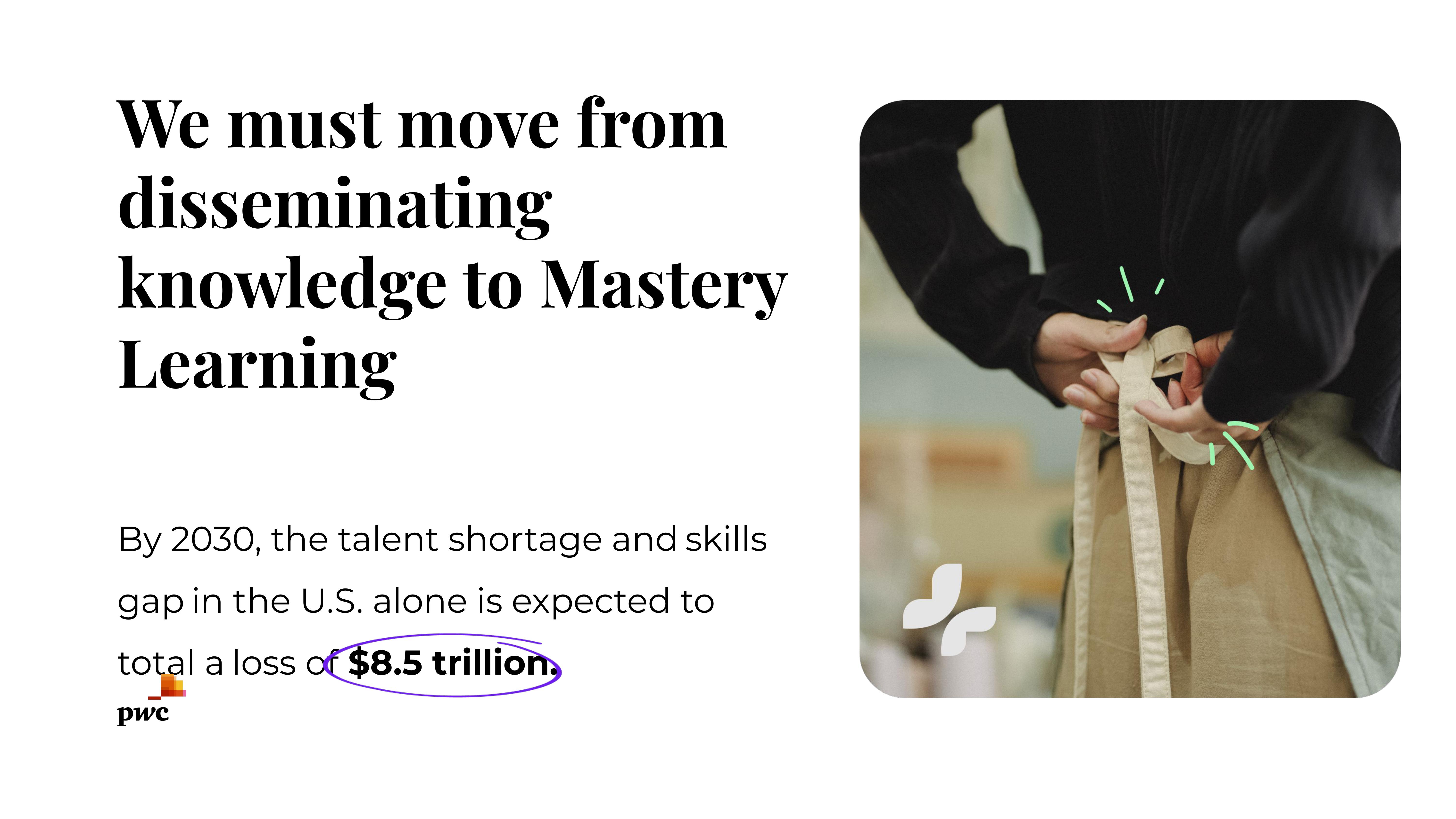
¿Cómo solucionará esto Tomorrow University?
Entonces, después de declarar que vivimos en una era de abundante información, afirmamos que debemos pasar de la difusión del conocimiento al dominio del aprendizaje. Eso suena genial, pero ¿qué es el Mastery Learning en este contexto y en qué se diferencia de lo que se estaba haciendo? ¿Quién es el “nosotros” en esa frase? ¿Y cómo se conecta la segunda afirmación de esta diapositiva con la diapositiva 2?
En general, todo esto se parece mucho a las pegatinas de parachoques; individualmente, parecen sabias y perspicaces, pero sin conectarlas o explorar el «por qué», no está claro por qué vale la pena hacerlo. Y, en el puesto de inversor, es difícil ver cómo esto ofrecerá un retorno de la inversión.
Ni siquiera es que no esté de acuerdo con nada de estas diapositivas, pero los fundadores no explican qué planean hacer para abordar ninguno de estos problemas. Hacen un buen trabajo al exponer el problema, pero luego no siguen adelante con su solución. Y aún más: ¿Cómo ayudará el dinero a solucionar esto?
Presentación Completa
En cualquier caso, si Tomorrow University consiguió alcanzar esa Serie A, probablemente la explicación convincente del modelo, documentos adjuntos o diferentes iteraciones consiguieron atraer a los inversores. Aún así, para un primer contacto espero que estos consejos o visión pueda servir de utilidad para sus presentaciones futuras.
